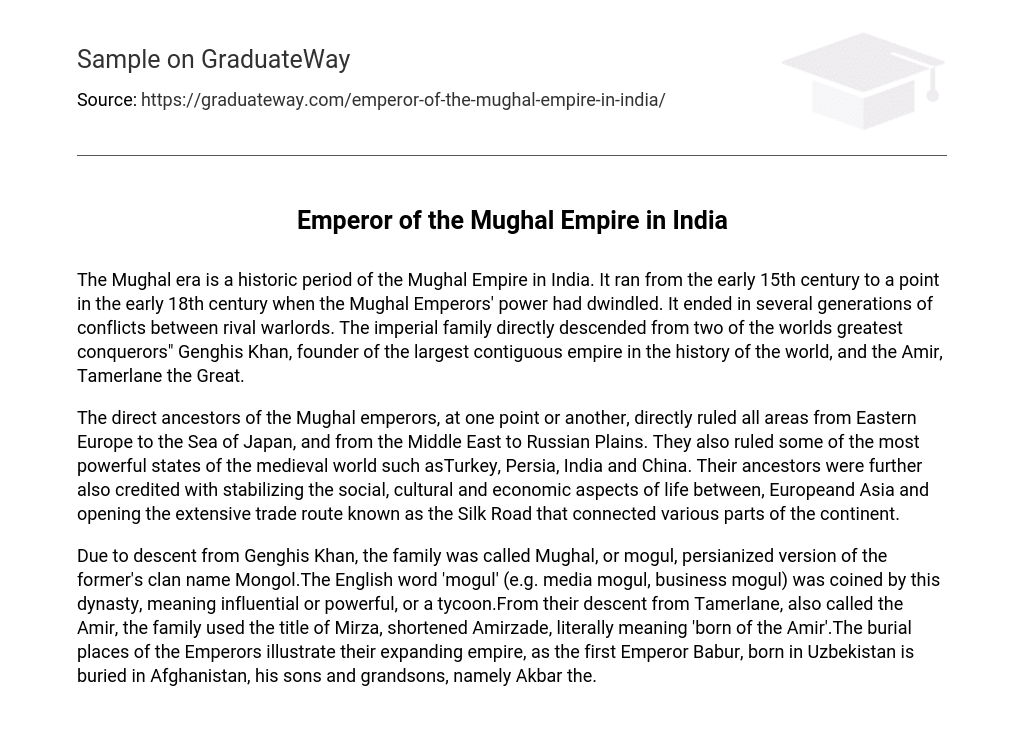The Mughal era is a historic period of the Mughal Empire in India. It ran from the early 15th century to a point in the early 18th century when the Mughal Emperors’ power had dwindled. It ended in several generations of conflicts between rival warlords. The imperial family directly descended from two of the worlds greatest conquerors” Genghis Khan, founder of the largest contiguous empire in the history of the world, and the Amir, Tamerlane the Great.
The direct ancestors of the Mughal emperors, at one point or another, directly ruled all areas from Eastern Europe to the Sea of Japan, and from the Middle East to Russian Plains. They also ruled some of the most powerful states of the medieval world such asTurkey, Persia, India and China. Their ancestors were further also credited with stabilizing the social, cultural and economic aspects of life between, Europeand Asia and opening the extensive trade route known as the Silk Road that connected various parts of the continent.
Due to descent from Genghis Khan, the family was called Mughal, or mogul, persianized version of the former’s clan name Mongol.The English word ‘mogul’ (e.g. media mogul, business mogul) was coined by this dynasty, meaning influential or powerful, or a tycoon.From their descent from Tamerlane, also called the Amir, the family used the title of Mirza, shortened Amirzade, literally meaning ‘born of the Amir’.The burial places of the Emperors illustrate their expanding empire, as the first Emperor Babur, born in Uzbekistan is buried in Afghanistan, his sons and grandsons, namely Akbar the.





